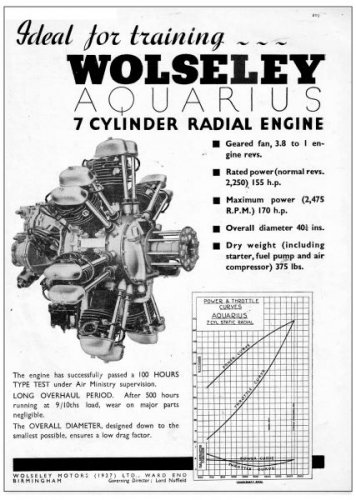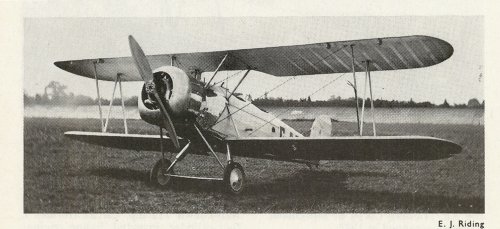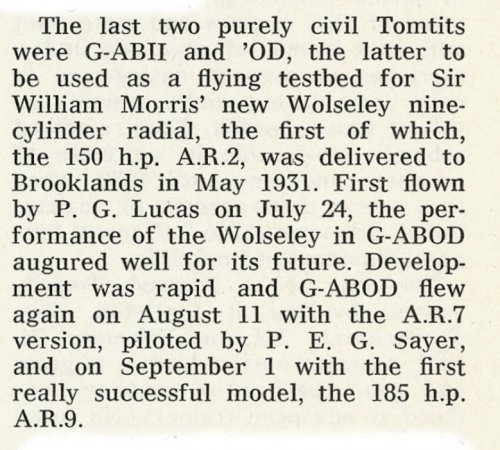- Joined
- 25 July 2007
- Messages
- 4,299
- Reaction score
- 4,196
http://www.secretprojects.co.uk/forum/index.php/topic,4492.msg35629.html#new
Hesham's find of a Parnall GP monoplane project has me wondering about Wolseley radial engines. Does anyone have access to "Wolseley Radial Aero Engines: Lord Nuffield's Thwarted Venture" by Peter Seymour?
Online sources are vague and mostly repetitive. I'm guessing that the Aries was of 40.5" diameter like the Aquarius (but 9-cylinder rather than 7-cyl).
What little I've been able to find:
Wolseley A.R.7 = Aquarius
Wolseley A.R.9 = Aries, eg: 200 hp A.R.9 powering Airspeed A.S.6 Envoy.
Wolseley Aquarius - 7 cylinder radial, 130 - 145 hp, 40.5" diameter, 4.1875 x 4.75"
Wolsesly Aries - 9 cylinder radial, 165 - 180 hp (later 200+ hp), 4.1875 x 4.75"
Wolseley Aries I - ??
Wolseley Aries II - ??
Wolseley Aries III - 9 cyl 225 hp (AS.6H Envoy)
Wolseley Scorpio I - 9 cyl 250 hp
Wolseley Scorpio II - 9 cyl 260 hp
This raises a few questions:
- What Aries variant was tested on the Parnall Hecks?
- What was the diameter of the Scorpio
I suspect that Mr. Seymour has the answers.
Image: http://aviationancestry.com/Engines/Wolseley/
Hesham's find of a Parnall GP monoplane project has me wondering about Wolseley radial engines. Does anyone have access to "Wolseley Radial Aero Engines: Lord Nuffield's Thwarted Venture" by Peter Seymour?
Online sources are vague and mostly repetitive. I'm guessing that the Aries was of 40.5" diameter like the Aquarius (but 9-cylinder rather than 7-cyl).
What little I've been able to find:
Wolseley A.R.7 = Aquarius
Wolseley A.R.9 = Aries, eg: 200 hp A.R.9 powering Airspeed A.S.6 Envoy.
Wolseley Aquarius - 7 cylinder radial, 130 - 145 hp, 40.5" diameter, 4.1875 x 4.75"
Wolsesly Aries - 9 cylinder radial, 165 - 180 hp (later 200+ hp), 4.1875 x 4.75"
Wolseley Aries I - ??
Wolseley Aries II - ??
Wolseley Aries III - 9 cyl 225 hp (AS.6H Envoy)
Wolseley Scorpio I - 9 cyl 250 hp
Wolseley Scorpio II - 9 cyl 260 hp
This raises a few questions:
- What Aries variant was tested on the Parnall Hecks?
- What was the diameter of the Scorpio
I suspect that Mr. Seymour has the answers.
Image: http://aviationancestry.com/Engines/Wolseley/



